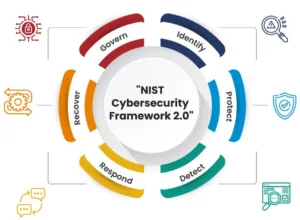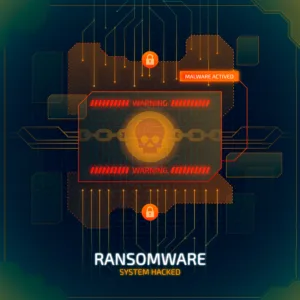
Table of Contents
I. Introduction of Cybersecurity Platform Consolidation
Cybersecurity platform consolidation is all about simplifying and centralizing the management of various security tools and solutions within an organization. Imagine a scenario where a company has multiple security systems in place, such as firewalls, antivirus software, intrusion detection systems, and more. Each of these tools may have its own interface, settings, and management processes, making security operations complex and time-consuming.
Now, picture a unified platform that brings all these security tools together under one roof. With cybersecurity platform consolidation, organizations can streamline their security operations by having a centralized management interface. It’s like having a single control center where administrators can monitor, configure, and control all security functions in one place.
By consolidating these disparate security tools, organizations can achieve several benefits. First, it simplifies management by eliminating the need to juggle multiple interfaces and settings. Second, it enhances visibility into security events and alerts across the entire organization, allowing for quicker threat detection and response. Third, it enables better integration between different security components, promoting the sharing of threat intelligence and coordinated responses.
Ultimately, the goal of cybersecurity platform consolidation is to make security operations more efficient, reduce complexity, and improve the overall security posture of an organization. It’s about bringing harmony and simplicity to the complex world of cybersecurity.
II. The Challenges of Managing Multiple Security Tools
Managing multiple security solutions can introduce complexities and inefficiencies that organizations often struggle to navigate. Here are some common challenges faced by organizations with disparate security tools:
1. Complexity and Overhead:
Each security solution typically comes with its own management interface, configuration settings, and update schedules. Managing multiple tools adds complexity, requiring administrators to navigate through different interfaces and learn various workflows. This complexity increases the risk of errors, slows down processes, and consumes valuable time and effort.
2. Lack of Centralized Visibility:
Disparate security tools often operate in isolation, generating separate logs, alerts, and reports. This lack of centralized visibility makes it difficult to obtain a holistic view of the organization’s security posture. Security teams must manually correlate and analyze data from multiple sources, hindering effective threat detection and response. The absence of a unified view can result in missed threats, delayed incident response, and increased vulnerability to attacks.
3. Incompatibility and Integration Challenges:
Integrating diverse security solutions can be a daunting task. Different tools may use incompatible data formats, protocols, or APIs, making seamless integration a significant challenge. Incomplete or ineffective integration can hinder information sharing, limit automation capabilities, and impede coordinated responses to security incidents. This lack of integration can create gaps in defense, leaving organizations exposed to threats.
4. Increased Management and Maintenance Burden:
Managing multiple security solutions requires dedicated resources, including personnel, licensing, and maintenance efforts. Each tool may require specialized expertise to configure, monitor, and maintain effectively. This can strain IT and security teams, particularly in organizations with limited resources, resulting in gaps in coverage, delayed updates, and reduced overall security effectiveness.
5. Lack of Scalability and Flexibility:
As organizations grow or adopt new technologies, managing a patchwork of disparate security solutions becomes increasingly challenging. Each new tool may require additional training, integration, and maintenance. The lack of scalability and flexibility in managing multiple tools can hinder the organization’s ability to adapt to evolving threats and efficiently scale security operations to meet changing needs.
6. Redundancy and Inefficiencies:
Over time, organizations may acquire multiple security tools that offer overlapping or redundant functionality. This redundancy not only increases costs but also creates confusion and potential conflicts between different tools. Inefficiencies arise when organizations invest in similar capabilities multiple times without maximizing their utilization or leveraging synergies.
To address these challenges, organizations often seek to consolidate their security tools into a unified platform. By doing so, they can simplify management, gain centralized visibility, enhance integration capabilities, reduce overhead, and increase the efficiency and effectiveness of their security operations.
III. Importance of simplifying security operations for organizations.
Simplifying security operations is of utmost importance for organizations in today’s rapidly evolving digital landscape. Here’s why:
1. Efficiency and Productivity:
Complex and fragmented security operations can be a drain on resources and productivity. Managing multiple security tools with different interfaces, configurations, and maintenance requirements can consume valuable time and effort. By simplifying security operations through consolidation, organizations can streamline workflows, reduce manual tasks, and allocate resources more effectively, allowing teams to focus on strategic initiatives and proactive threat hunting.
2. Rapid Threat Detection and Response:
In the face of increasingly sophisticated cyber threats, speed is crucial. Simplifying security operations enables organizations to detect and respond to threats more swiftly. A centralized platform that consolidates security tools provides a unified view of security events, simplifying the process of correlating data and identifying patterns. With improved visibility and streamlined processes, security teams can respond faster, mitigating potential damages and minimizing the impact of breaches.
3. Enhanced Collaboration and Communication:
Effective security operations rely on collaboration and communication between different teams, including security analysts, incident responders, and IT personnel. When security operations are simplified, it becomes easier for teams to work together seamlessly. A consolidated platform fosters better communication, information sharing, and coordination, leading to more efficient incident response, reduced response times, and ultimately better protection against threats.
4. Scalability and Adaptability:
As organizations grow and their security needs evolve, managing multiple disparate security tools can become increasingly challenging. Simplifying security operations through consolidation provides scalability and adaptability. A centralized platform can accommodate the organization’s changing security requirements, whether it’s expanding to new locations, incorporating new technologies, or responding to emerging threats. This scalability allows organizations to maintain a robust security posture without facing significant logistical and administrative hurdles.
5. Compliance and Auditing:
Compliance with industry regulations and standards is a critical aspect of security operations for many organizations. Simplifying security operations through consolidation makes it easier to enforce and demonstrate compliance. With a centralized platform, organizations can more effectively monitor security controls, generate reports, and conduct audits, ensuring adherence to regulations and demonstrating a commitment to maintaining a secure environment.
In essence, simplifying security operations provides organizations with increased efficiency, agility, and resilience. It empowers security teams to stay ahead of threats, collaborate effectively, and optimize resource allocation, ultimately safeguarding critical assets and protecting the organization’s reputation.
IV. Benefits of Cybersecurity Platform Consolidation
Consolidating security tools into a unified platform brings several advantages and benefits to organizations. Here are the key benefits of cybersecurity platform consolidation:
1. Centralized Management:
One of the primary benefits is centralized management. With a consolidated platform, organizations can manage their security operations from a single, unified interface. This centralized management simplifies administrative tasks, reduces complexity, and saves time and effort. Security administrators can configure, monitor, and control various security functions across the organization, such as access controls, threat detection rules, and incident response workflows, all from a centralized dashboard.
2. Enhanced Visibility:
Consolidation improves visibility into security events and threats. By integrating disparate security tools into a unified platform, organizations can gain a comprehensive and unified view of their security posture. This unified visibility enables security teams to correlate and analyze data from multiple sources, identify patterns, and detect threats more effectively. It helps uncover hidden connections and provides a holistic understanding of security incidents, facilitating quicker response and mitigation.
3. Improved Integration:
Cybersecurity platform consolidation promotes better integration between security components. Different security tools can seamlessly communicate and share information within a consolidated platform, enabling enhanced collaboration and coordination. This integration allows for the efficient sharing of threat intelligence, automated workflows, and synchronized responses. The improved integration streamlines processes, reduces manual efforts, and ensures a more cohesive and effective defense against evolving threats.
4. Streamlined Operations and Efficiency:
Consolidation eliminates the complexities and inefficiencies associated with managing multiple security tools. It streamlines security operations, reduces administrative overhead, and optimizes resource allocation. With a unified platform, organizations can automate routine tasks, standardize processes, and improve operational efficiency. This enables security teams to focus on more strategic activities, such as proactive threat hunting, incident response, and security posture improvement.
5. Cost Optimization:
Consolidating security tools can lead to cost optimization. Maintaining multiple standalone security solutions incurs licensing, maintenance, and support costs. Consolidation eliminates redundancies and reduces licensing fees by consolidating functionality into a single platform. Additionally, it minimizes the need for specialized expertise in managing different tools, potentially reducing personnel costs. Overall, consolidation offers an opportunity to optimize the cost of security operations while maintaining a robust security posture.
6. Simplified Compliance and Auditing:
Compliance with regulatory requirements and industry standards is a crucial aspect of cybersecurity. Consolidation simplifies compliance management by providing a unified view of security controls, policies, and audit trails. It enables organizations to easily demonstrate adherence to regulations, generate compliance reports, and conduct audits. A consolidated platform streamlines the process of monitoring and enforcing security policies, ensuring organizations stay in line with applicable standards.
By consolidating security tools into a unified platform, organizations can benefit from centralized management, enhanced visibility, improved integration, streamlined operations, cost optimization, and simplified compliance. These advantages contribute to a stronger security posture, improved operational efficiency, and better protection against cyber threats.
V. Considerations for Choosing a Consolidated Platform
When selecting a cybersecurity platform for consolidation, there are several important factors to consider. Here are the key considerations to evaluate:
1. Scalability:
It’s crucial to choose a consolidated platform that can scale alongside your organization’s needs. Consider the platform’s ability to handle increasing volumes of security data, support a growing user base, and adapt to future technologies and threats. Scalability ensures that the platform can accommodate your organization’s evolving security requirements without compromising performance or functionality.
2. Compatibility:
Assess the compatibility of the consolidated platform with your existing infrastructure, systems, and security tools. Ensure that the platform can seamlessly integrate with your current technology stack to avoid disruptions and maximize the value of your existing investments. Compatibility with different operating systems, databases, and network architectures is essential for smooth integration and interoperability.
3. Integration Capabilities:
The chosen platform should have robust integration capabilities. Evaluate its ability to connect and exchange data with a wide range of security tools, such as firewalls, SIEM systems, threat intelligence platforms, and endpoint protection solutions. Integration facilitates the flow of information, enables real-time threat detection and response, and enhances the overall effectiveness of your security operations.
4. Vendor Support and Expertise:
Consider the reputation and expertise of the platform’s vendor. Assess their track record in delivering reliable and responsive customer support, including timely updates, patches, and bug fixes. Vendor support plays a vital role in resolving issues, addressing vulnerabilities, and ensuring that your security platform remains up-to-date and aligned with emerging threats and industry best practices.
5. Alignment with Organizational Requirements and Goals:
It’s crucial to align the chosen platform with your organization’s specific requirements and goals. Consider your industry, regulatory compliance needs, and unique security challenges. Evaluate how the platform addresses these requirements and supports your strategic security objectives. The platform should provide the necessary features, capabilities, and customization options to meet your organization’s unique security needs.
6. Usability and User Experience:
Evaluate the usability and user experience of the consolidated platform. A user-friendly interface and intuitive workflows are essential for efficient security operations. Consider factors such as ease of configuration, customization options, and the platform’s reporting and visualization capabilities. The platform should empower your security teams with tools that are easy to navigate, understand, and leverage for effective threat detection and response.
7. Future Development and Innovation:
Assess the vendor’s commitment to ongoing development, innovation, and staying ahead of emerging threats. Look for a platform that demonstrates a proactive approach to security, regularly introduces new features and enhancements, and actively incorporates feedback from customers. This ensures that your organization will continue to benefit from the latest advancements in cybersecurity and remain resilient against evolving threats.
By carefully considering these factors, you can select a cybersecurity platform for consolidation that aligns with your organization’s requirements, supports your security goals, and provides a robust foundation for streamlined and effective security operations.
VI. Planning and Implementing Cybersecurity Platform Consolidation
Planning and implementing cybersecurity platform consolidation requires a systematic approach to ensure a successful transition. Here’s an outline of the steps involved in the consolidation process, emphasizing the importance of careful planning:
I. Assessment Phase:
A. Identify Security Requirements:
– Evaluate the organization’s current and future security requirements.
– Determine the desired outcomes and goals of the consolidation effort.
B. Evaluate Existing Tools:
– Conduct a comprehensive inventory of existing security tools.
– Assess their functionalities, strengths, weaknesses, and integration capabilities.
– Determine whether any tools can be retained or repurposed within the consolidated platform.
C. Perform Gap Analysis:
– Identify gaps and deficiencies in the current security infrastructure.
– Determine the key areas where consolidation can address these gaps.
– Prioritize the areas that require immediate attention and improvement.
II. Planning Phase:
A. Define Consolidation Strategy:
– Based on the assessment and gap analysis, define the approach for consolidation.
– Determine whether a phased or big-bang approach is more suitable for your organization.
– Set clear objectives, timelines, and milestones for the consolidation project.
B. Develop Migration Plan:
– Create a detailed migration plan outlining the steps, tasks, and responsibilities.
– Determine the order of migrating tools, considering dependencies and integration requirements.
– Allocate resources, including personnel and budget, for the consolidation project.
C. Address Compatibility and Integration:
– Assess the compatibility of the consolidated platform with existing infrastructure.
– Determine the integration requirements and plan for smooth data flow between tools.
– Identify potential challenges and devise solutions for seamless integration.
III. Implementation Phase:
A. Acquire and Configure the Consolidated Platform:
– Select a suitable cybersecurity platform based on your requirements and evaluation.
– Procure the necessary licenses or subscriptions for the chosen platform.
– Configure the platform according to your organization’s security policies and best practices.
B. Migrate Security Tools:
– Follow the migration plan developed earlier to migrate security tools.
– Test and validate the integration of each tool within the consolidated platform.
– Ensure data integrity and proper functioning of the migrated tools.
C. Training and Knowledge Transfer:
– Provide training sessions and workshops to familiarize security teams with the consolidated platform.
– Promote knowledge transfer among staff to ensure effective utilization of the new platform.
– Encourage collaboration and sharing of best practices among security teams.
IV. Monitoring and Optimization:
A. Monitor and Fine-tune:
– Continuously monitor the performance and effectiveness of the consolidated platform.
– Analyze logs, metrics, and alerts to ensure optimal security operations.
– Identify areas for improvement and fine-tune configurations and processes.
B. Security Posture Assessment:
– Regularly assess the overall security posture of the organization using the consolidated platform.
– Conduct periodic security audits and vulnerability assessments.
– Leverage the consolidated platform’s reporting capabilities to generate comprehensive security reports.
C. Stay Updated:
– Keep the consolidated platform and its components up-to-date with the latest patches and updates.
– Stay informed about emerging threats, vulnerabilities, and best practices.
– Engage with the platform vendor and participate in user communities to benefit from ongoing improvements and innovations.
Careful planning is crucial to the success of cybersecurity platform consolidation. By assessing requirements, evaluating existing tools, conducting a gap analysis, and developing a migration plan, organizations can ensure a smooth and effective transition. Ongoing monitoring, optimization, and staying up-to-date are vital to maintaining a strong security posture in the long run.
VII. Best Practices for Successful Cybersecurity Platform Consolidation
Implementing cybersecurity platform consolidation requires careful planning and execution. To ensure a successful transition, here are some best practices to follow:
1. Thorough Testing and Validation:
– Conduct comprehensive testing of the consolidated platform before deployment.
– Test the integration of different security tools and validate their functionality.
– Perform thorough security and functionality tests to ensure the platform meets requirements and performs as expected.
2. Robust Training and Knowledge Transfer:
– Provide comprehensive training to security teams on how to use the consolidated platform effectively.
– Promote knowledge transfer among staff members to ensure a smooth transition.
– Offer workshops and documentation to help users understand the new platform’s features and workflows.
3. Involvement of Key Stakeholders:
– Involve key stakeholders, such as IT teams, security personnel, and senior management, from the outset.
– Seek input and feedback from stakeholders to ensure their requirements are considered during the consolidation process.
– Collaborate with stakeholders to define goals, assess risks, and make informed decisions.
4. Effective Communication:
– Maintain open and transparent communication throughout the consolidation process.
– Regularly update stakeholders on progress, milestones, and any changes or challenges encountered.
– Foster collaboration among different teams involved in the consolidation to align efforts and expectations.
5. Ongoing Monitoring and Optimization:
– Continuously monitor the performance and effectiveness of the consolidated platform.
– Establish key performance indicators (KPIs) to track the platform’s impact on security operations.
– Regularly review and optimize configurations, processes, and workflows to maximize efficiency and effectiveness.
6. Post-Consolidation Evaluation:
– Conduct a post-consolidation evaluation to assess the success of the consolidation effort.
– Evaluate whether the consolidated platform has met the defined objectives and addressed the identified gaps.
– Identify lessons learned and areas for improvement to enhance future security initiatives.
7. Security Culture and Awareness:
– Promote a strong security culture within the organization.
– Educate employees about the benefits and importance of the consolidated platform.
– Encourage employees to report any security concerns or incidents to the designated security team.
8. Collaboration with the Platform Vendor:
– Engage with the platform vendor and leverage their expertise and support resources.
– Stay updated with vendor communications, patches, updates, and security advisories.
– Participate in user communities and forums to exchange knowledge and learn from others’ experiences. By following these best practices, organizations can ensure a smooth transition during cybersecurity platform consolidation.
Thorough testing, training, involving key stakeholders, effective communication, ongoing monitoring, optimization, and post-consolidation evaluation all contribute to the success of the consolidation effort and help establish a strong and resilient security foundation.
VIII. Case Studies and Examples
Here are a few real-world examples of organizations that have successfully consolidated their cybersecurity platforms:
1. Company X:
– Company X, a multinational financial institution, faced challenges with managing multiple security tools across its global operations.
– They decided to consolidate their cybersecurity platform to enhance efficiency and strengthen their security posture.
– By implementing a unified platform, they achieved centralized management, improved visibility, and streamlined security operations.
– The consolidation effort enabled them to respond faster to threats, optimize resource allocation, and align security with regulatory requirements.
2. Organization Y:
– Organization Y, a healthcare provider, recognized the need to simplify their security operations to protect sensitive patient data.
– They consolidated their security tools into a single platform, integrating their network security, endpoint protection, and threat intelligence systems.
– The consolidated platform provided a unified view of security events, improved threat detection, and enabled proactive incident response.
– Organization Y experienced greater operational efficiency, reduced administrative overhead, and improved compliance with healthcare regulations.
3. Company Z:
– Company Z, an e-commerce retailer, faced challenges with managing their security infrastructure as their business grew rapidly.
– They opted to consolidate their security tools and migrate to a unified cybersecurity platform.
– The consolidation effort enabled them to automate security processes, gain better visibility into threats, and enhance incident response capabilities.
– With the consolidated platform, Company Z achieved improved scalability, reduced complexity, and increased adaptability to emerging threats.
These real-world examples demonstrate the benefits that organizations can achieve through cybersecurity platform consolidation. By centralizing management, enhancing visibility, and improving integration, these companies successfully simplified their security operations, bolstered their defenses, and achieved greater efficiency in protecting their critical assets.
It’s important to note that each organization’s consolidation journey will be unique, and the specific outcomes and benefits may vary depending on their individual requirements and implementation strategies. However, these examples highlight the positive impact of consolidation on security operations and overall organizational resilience.
IX. Conclusion
By considering cybersecurity platform consolidation, you empower your organization to simplify security operations, gain better visibility, enhance integration, streamline processes, and optimize costs. This strategic approach strengthens your security posture, reduces the risk of breaches, and enhances your ability to detect and respond to threats effectively.
Don’t overlook the transformative impact of consolidation. Evaluate your security needs, engage key stakeholders, and embark on a well-planned consolidation journey to reinforce your organization’s security defenses and protect your critical assets.
Embracing consolidation as a security strategy sets the stage for a more resilient and proactive security environment.
Do follow on “https://cybertechworld.co.in” for more such insightful cybersecurity content.



















